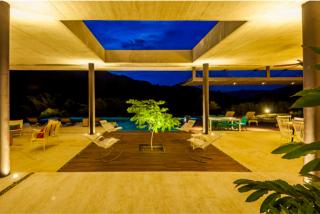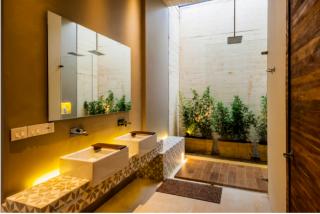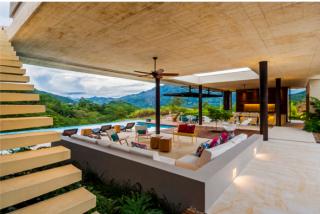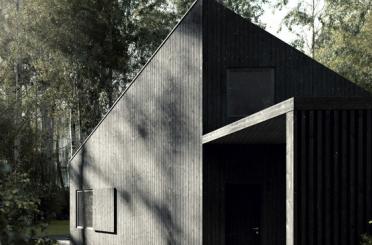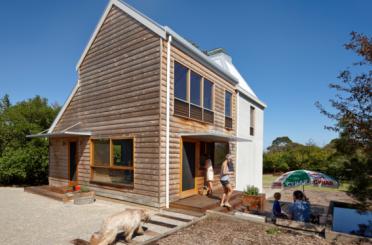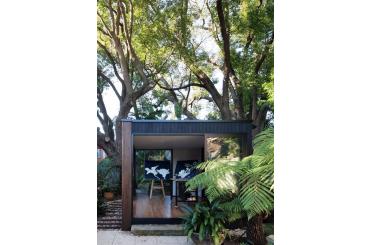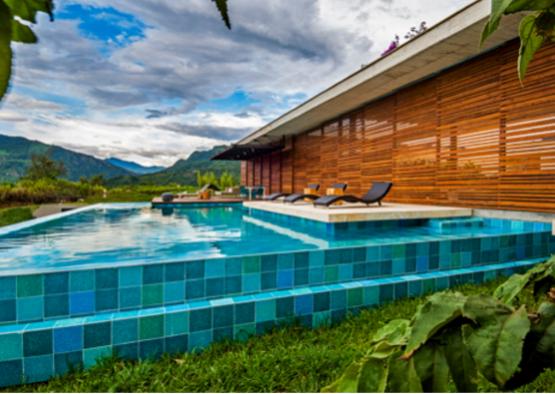
Overview
The client’s awareness that timber becomes more beautiful with time and proper maintenance enabled this deceptively simple country home in Colombia to be built.
The challenge for designers Arquitectura ed Estudio and Natalia Heredia was to create a country house on a steep site at nearly 1000m above sea level in an isolated mountain region west of Bogotá, where the weather is predominantly hot and dry year-round.
The brief was for a built area of 550m2 including three bedrooms, studio, service and social areas, a terrace and swimming pool, with all but the pool able to be completely closed when the house was not in use.
Spatially, the house is arranged around a succession of voids and blocks that live under an expansive roof, which is open towards the mountains on one side and towards a series of patios on the other. This double-spatial relationship generates diversity and richness within the various spaces of the house.
Story and pictures by special arrangement with timber+DESIGN International magazine.
Structure
Casa 7A could be described as a ‘natural composition’ – featuring so-called ‘noble’ materials across all aspects of the construction process.
The predominant use of ochre-tinted in-situ concrete and teak generates an array of textures, colours and shadows that change with shifting sunlight.
All textures are defined by 5cm and 10cm modules, expressed in everything from the timber formwork for the concrete to the teak panels and prefabricated elements that enclose the patio.
Walls and slabs were built with in-situ concrete and the ochre tone was achieved by mixing white cement with local sand.
Teak, harvested from sustainable plantations, features in the distinctive facade, furniture and some flooring. Most of the floor area is sandstone, ensuring uniformity with the roof tone.
The distinctive swimming pool finish is intended to reflect the blue-green colours of the surrounding forest, using 20 x 20 cm tiles – de-toned and hand painted.
Exterior
From the road, Casa 7A shows itself as completely closed – providing privacy and generating a sense of expectation, which is enriched by an intentionally low and narrow entry block.
Crossing the threshold, the perception changes: the space opens up through a patio that frames an uninterrupted view of the mountains. The platform that holds the social area seems to float between the water feature at the entrance and the swimming pool – again allowing the natural elements of the site to dominate the space.
Although maintenance can be a hard sell, the architects said that with proper care, “timber is as trustworthy as any other material”.
The primary sustainability aspects of the design come from the spatial distribution and orientation of the project. A north-south bar scheme minimises direct solar gain on the facades, while allowing cross-ventilation to all areas – private and social – without mechanical devices. The flat roof features a ventilated waffle slab and white gravel finish on top.
The project recycles rainwater for vegetation, with solar panel heating for the swimming pool water.
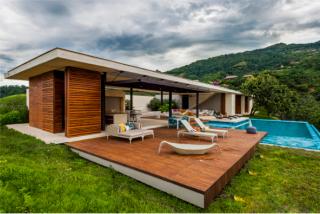
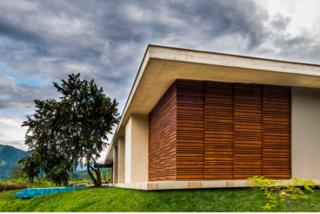
Interior
The social areas of the house appear as a unique space – open towards the mountains on one side and to the entrance patio on the other.
The character of this space is defined by a second patio, which is framed by a void in the roof. Centred in this patio and the ‘heart’ of the house is an acacia with its sun-protecting foliage.
The opposite wing houses the private areas facing the mountains. These are articulated by a third patio, which proposes a completely different character and is defined by a permeable wall of prefabricated concrete blocks and an exuberant native garden.
Because of the special climate in this part of Colombia, there is no glass in the house. Instead there is a ‘knitted’ facade of enclosing teak. Timber screens that slide and pivot deliver the required full enclosure when the house is not occupied.
Timber was also specified for the kitchen enclosure – allowing it to look like an object housed under the roof, and keeping the same language as the facade.
The main technical challenge was ensuring the timber was properly dried beforehand – reducing movement in the region’s regular temperature changes and humidity.
